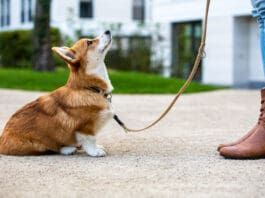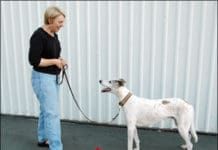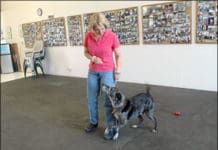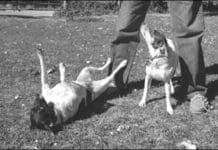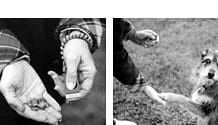Teaching Your Dog to “Leave It” On Cue
mark the desired behavior with the click of a clicker (or the word "Yes!") and feed him a different treat.üPractice "Leave it!" with everything your dog likes in real life: food
Training An Older Dog
You've no doubt heard the adage, You can't teach an old dog new tricks." If you have an older dog
The 5 Most Common Dog Training Mistakes
You'll never hear me say that coercive dog training methods don't work; they can. Nor will you ever hear me say that positive dog training turns every dog into a model canine citizen. It doesn't. There is a big difference, however, between positive and coercive training. When methods that rely on the use of force and application of pain fail, it's often because of the dog's inability to tolerate coercion and intimidation. This can result in serious long-term behavioral damage and sometimes physical injury.
Dog Training Using Positive Techniques
and who are appropriately reinforced for the ""right"" behavior
Dog Trainers Note How Men and Women May Train Differently
Men are from Mars. Women are from Venus. Dogs are from Neptune. A well-known trainer recently made a public comment about men’s inability to act silly with their dogs, to the detriment of their ability to use positive training methods effectively. Are we really three alien species, destined to live forever in a world of miscommunication and misinterpretation? Is one gender truly better suited to bridge the communication gap between the human and canine species?
Consistent Dog Training With Regards to Men and Women
In general, men tend to be more physical with their dogs, and more assertive, enjoying rough-and-tumble wrestling games and expecting the dog to understand and obey. Women tend to be softer, more into cuddling than wrestling, and take more interest in teaching the dog to understand the complex world of primate (human) communication.
New to Positive Dog Training?
Switching to positive training? At first, it might be frustrating for you – and your dog. The benefits, however, will last a lifetime. In positive training, the goal is to help the dog do the right thing and then reward him for it, rather than punishing him for doing the wrong thing. If he makes a mistake, the behavior is ignored, or excused with an “Oops, try again!” to encourage the dog to do something else.
Best Dog Training Approaches
All dog training techniques fit somewhere on a long continuum, from seriously harsh and abusive punishment-based methods at one extreme, to pure positive reinforcement at the other. Neither extreme is likely to be very practical or effective, nor will you find many trainers who recommend using only methods from one end or the other. Most trainers use a combination of techniques that place them somewhere between the two ends of the continuum. Which side of center they are on defines them as primarily compulsion-based trainers or primarily positive ones.
Training a Dog to Stay Using Cues
Sandi chooses a
quiet location. Blue is easily distracted, so
she works at a close range and slowly builds
the duration of the Stay.üWhen a cyclist pulled up, Sandi moved right
next to Blue to ascertain how he would deal
with a distraction.
quiet location. Blue is easily distracted, so
she works at a close range and slowly builds
the duration of the Stay.üWhen a cyclist pulled up, Sandi moved right
next to Blue to ascertain how he would deal
with a distraction.
Clicker Training and Trick Training Your Dog
one
can shape a new trick."
can shape a new trick."
Tail-Wagging Training
Training, says Massachusetts dog trainer Donna Duford, should be fun, not work. Her seminars are such upbeat, tail-wagging events that the dogs seem to be having a party. Look closer and you’ll see a serious class, with participants taking notes as Duford reviews the laws of learning and defines classical conditioning, operant conditioning, positive and negative reinforcement, positive and negative punishment, continuous and variable reinforcement schedules, and other fundamentals of behavioral training.






